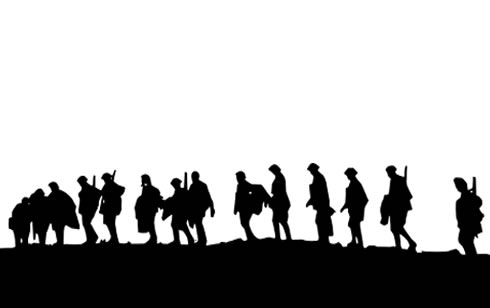 Read the article 'What is war good for?' and answer the following questions. Then share your answers in pairs, small groups or in a classroom discussion.
Read the article 'What is war good for?' and answer the following questions. Then share your answers in pairs, small groups or in a classroom discussion.
1. Fr Andrew Hamilton writes ‘Public life is also coarsened and impoverished by war.’ In what ways do you think life is coarsened and impoverished in a war-torn country? What about countries fighting a war in a foreign land? The war may not be on their soil but are they affected?
2. Fr Hamilton says that the horror of war fascinates us? Do you agree? If yes, give an example of how Australians are intrigued with the horrors of war. If you don’t agree, explain why.
3. Is it logical to think that war can lead to peace? Where in history has war led to peace? When has it not?
4. What does the following quote mean to you: ‘They turn the land into a desert and call it peace’? How does this explain what war can do to a country?
5. How can the teachings of Jesus at first seem to be a weaker option compared with an act of violence? How is choosing non-violence actually more courageous than acting out in violence?
Activities1.
A just war Under the subtitle ‘Thinking about war’, Fr Hamilton writes four conditions that must be met for a war to be consider just. Break up into pairs and choose a war that Australia has fought. Ask the questions Fr Hamilton poses of that war. (You will need to do research online or in your school library to find the answers). After you’re finished answering the questions, decide if you think the war you chose was a just war? Why or why not? Make sure you defend your answer with facts. Share your thoughts with your class.
2.
A modern day Good Samaritan Read the story of the Good Samaritan (Luke 10:25-37), then rewrite the story from a contemporary perspective. In your story, include a modern Australian setting. Who would just pass the wounded person by? Who would be the 'good Samaritan' in our society today? When you’re finished with your story, exchange them with a partner for an edit and a proofread. Make all corrections necessary and then share your story with the class.
For younger studentsPeace hand chain Create a peace hand chain out of coloured paper. Pick a paper colour you feel represents you and trace (or have someone else trace) your right or left hand on the paper. Once your hand is traced, thoughtfully write your name and an action you can take to help make the world more peaceful. Then, cut out your paper hand. Teachers can glue or staple students' paper hands together by the index finger and thumb or pinky finger and side of palm. Once all hands are attached, hang your class’s peace hand chain up for everyone to see!